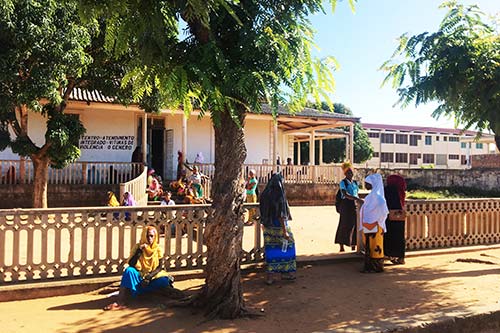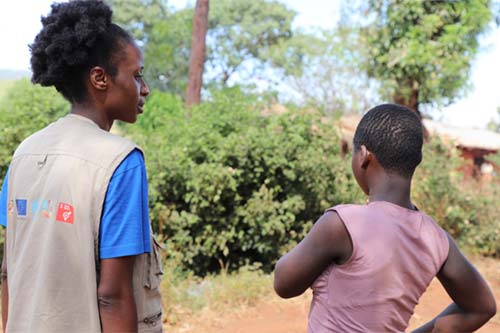News
Young women face greatest threat from intimate partner violence, new UNFPA data dashboard shows
- 02 December 2020
News
UNITED NATIONS, New York – A new data dashboard launched by UNFPA today shows that young women face the greatest risk of intimate partner violence. Yet partner violence is rampant around the world, and older women are not immune, the new tool reveals.
The new geospatial dashboard contains up-to-date, reliable statistics on intimate partner violence for 119 countries, the largest collection of country data yet available. Data can be navigated by age, employment, education and household wealth, which will enable policymakers, advocates, service providers and journalists to better target their efforts.
“This dashboard will serve technical practitioners to determine where work should be focused and, more importantly, it will support policymakers to target and tailor their legislations and policies based on the trends reported in sub-regions and sub-groups,” said Nafissatou Diop, UNFPA’s chief gender and human rights expert. “It is a tool that is useful for everyone acting to end gender-based violence, including activists and other key players.”
“Data tell us where to look, where to act, and who to watch out for. Data on intimate partner violence is notoriously difficult to collect, but these data represent the Sustainable Development Goal reporting of 119 nations, and what they tell us is shocking,” said Rachel Snow, UNFPA’s chief expert on population and development.

In more than 75 per cent of countries with data on intimate partner violence by age, women under age 35 experienced the greatest risk, the dashboard shows.
In Zimbabwe, for example, girls aged 15-19 were three times more likely to have experienced partner violence in the last year than women aged 45-49. In Tajikistan, more than 1 in 5 women aged 25-34 had experienced partner violence in the last 12 months.
Ana Maria*, from Mozambique, was 20 years old when she married. The violence began a few years later, when she confronted her husband about an infidelity. The battery escalated, and he even used weapons. “I discovered that those police batons have iron in them,” she told UNFPA. “I couldn’t recognize my own face anymore.”
Brenda*, in Malawi, was even younger. She was just 13 when an older family friend initiated a relationship with her. He soon began to sexually abuse her.
“I respected him as an uncle,” she described. “He would give money and threaten me to not disclose what was happening.”
By the time the abuse was discovered and investigated, Brenda was three months pregnant. She later miscarried.
These are just some of the stories that have come to light. But many more accounts of intimate partner violence are not reported.
All forms of gender-based violence, including intimate partner violence, are underreported. Many survivors are discouraged from speaking out because of fear, distrust of justice systems, the widespread impunity enjoyed by perpetrators, as well as social norms that blame women for experiencing abuse.
“Young women sometimes have difficulty in identifying abuse, and when they [do] know, they do not always know where to get help,” said Munashe Grey, 20-year-old peer educator in Zimbabwe.
The new data dashboard is helping to shine a light on the prevalence of intimate partner violence around the world.
While it cannot correct for underreporting, it does bring together government-supplied data at national and subnational levels, allowing experts to identify which girls and women are most vulnerable.
Risk factors vary widely among countries. In Haiti, for example, intimate partner violence is more prevalent in metropolitan areas, while in Uganda it is more common in in rural areas.

And older women are still vulnerable. In Zimbabwe, for instance, more than one in 10 women aged 45-49 has experienced intimate partner violence in the last year.
Meanwhile, Ana Maria and Brenda say they hope leaders and policymakers learn from experiences like theirs.
And they are both determined to move forward with their lives.
Brenda received assistance from the Spotlight Initiative, a global partnership between the European Union and the United Nations, including UNFPA. With counselling and support, she was able to provide evidence to investigators, resulting in her abuser’s arrest and conviction.
Ana Maria, now 30, also received support from a Spotlight Initiative-supported centre for survivors of violence. She first tried couple’s counselling, but when the violence did not stop, she decided to leave her husband.
“I want to see all women in Mozambique empowered so they can fight for their dreams and support the dreams of their children," she said.
*Names changed for privacy and protection